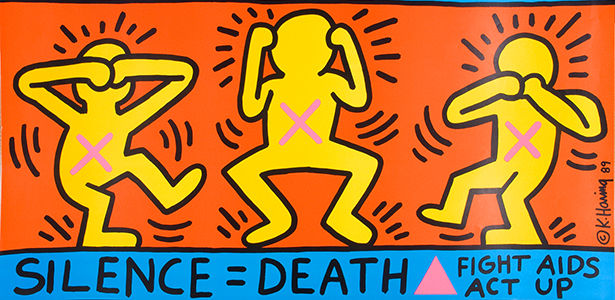Day 10 of Celebrating Pride: The AIDS Crisis and Its Impact on the LGBTQIA+ Community
- VaultBoyBrett
- Jun 10, 2024
- 2 min read
The emergence of the AIDS crisis in the early 1980s marked a period of intense fear, uncertainty, and tragedy for the LGBTQIA+ community. The disease, which was initially identified among gay men in the United States, quickly became synonymous with the community, leading to widespread stigma and discrimination. This association was further cemented when the disease was first termed “Gay-Related Immune Deficiency” (GRID), reinforcing the erroneous belief that it was exclusive to homosexuals.
The impact of the AIDS crisis was devastating. It ravaged communities, cutting short the lives of countless individuals and leaving a legacy of grief and loss. The LGBTQIA+ community, already marginalized and facing discrimination, found itself at the epicenter of a growing epidemic. Gay and bisexual men were disproportionately affected, and the crisis laid bare the systemic issues that perpetuated discrimination and hindered effective responses to health emergencies.
Activism during the AIDS crisis was a pivotal moment for the LGBTQIA+ community. Groups like ACT UP (AIDS Coalition to Unleash Power) and the Gay Men’s Health Crisis (GMHC) emerged as powerful voices demanding attention, funding, and research to combat the epidemic. Their efforts were instrumental in bringing about changes in policy and public perception, and their legacy continues to influence LGBTQIA+ activism today.
The Ongoing Fight Against HIV/AIDS
The fight against HIV/AIDS has seen remarkable progress since the darkest days of the AIDS crisis. Advances in medical science have led to the development of antiretroviral therapy (ART), which has transformed HIV from a death sentence into a manageable chronic condition. However, the battle is far from over.
The global health community has set ambitious targets to end the HIV/AIDS pandemic as a public health threat by 2030. The ‘95-95-95’ targets set by the United Nations Programme on HIV/AIDS (UNAIDS) aim for at least 95% of people living with HIV to know their status, 95% of those to be on antiretroviral therapy, and 95% of those to have an undetectable viral load. Achieving these goals requires a concerted effort to address the inequalities that drive the epidemic.
Marginalized communities, including the LGBTQIA+ population, continue to face barriers to accessing HIV services. Discrimination, criminalization, and social stigma are significant obstacles that must be overcome. The world can only beat AIDS by ending the inequalities that fuel the epidemic and putting people at the center of the response.
The AIDS crisis has left an indelible mark on the LGBTQIA+ community, shaping its history and activism. The ongoing fight against HIV/AIDS is not just a medical battle but a fight for equality, dignity, and human rights. As we reflect on the past and look to the future, it is crucial to continue advocating for policies and practices that address the unique needs of the LGBTQIA+ community and ensure that no one is left behind in the journey to end AIDS.
Sources:











Comments